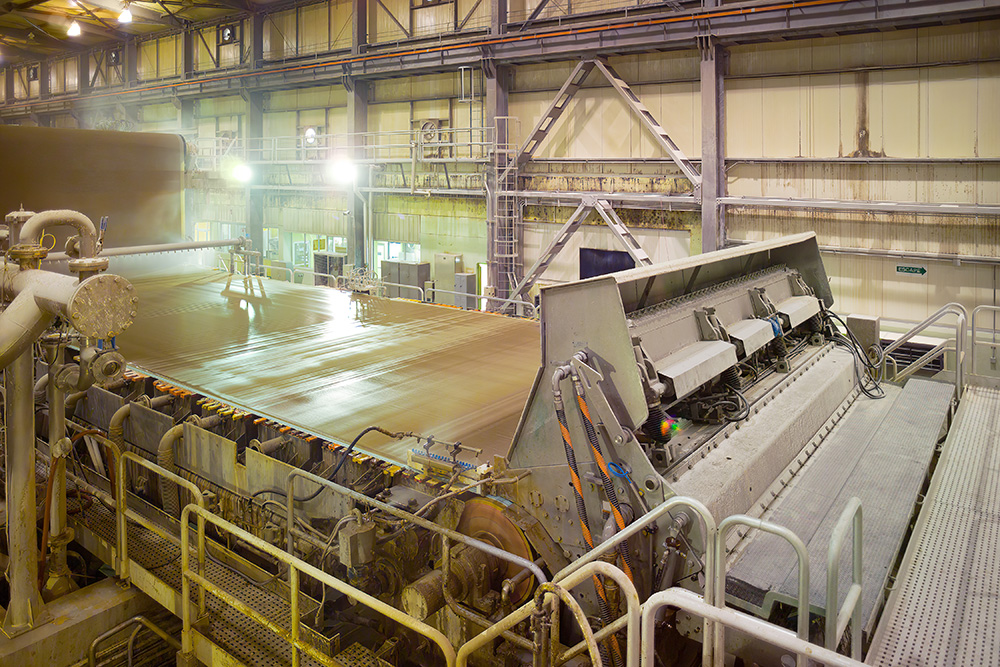In mill operations, keeping more stock on hand often feels like the safer choice. Supply chain uncertainty, aging equipment, and the risk of unplanned downtime make excess inventory seem like the safest path.
Yet more inventory does not always translate into more uptime. Surplus parts can tie up working capital, crowd limited floor space, and mask the absence of critical parts that are needed when a failure occurs.
The real challenge for mills is not whether to hold spares, but how to maintain the right parts, in the right condition, and in the right quantity to support production.
When Extra Stock Strengthens Reliability
There are situations where carrying more inventory supports reliability. Mills dealing with long supplier lead times, or those operating far from distribution hubs, may need backup parts on hand to offset supply chain uncertainty.
Late-lifecycle components present another case. Once a supplier announces the end of production for a legacy part, that part may disappear from the market altogether. Stocking ahead helps ensure critical assets aren’t sidelined by discontinued parts.
Planned outages are a third example where overstocking pays off. Staging complete kits of gaskets, seals, or refiner plates ahead of shutdowns keeps crews focused on the task at hand and avoids costly delays from missing items. In these situations, inventory is not held “just in case.” It is part of a deliberate strategy to manage downtime.
How Overstocking Introduces Downtime Risk
The greater risk arises when storerooms are filled with parts that do not contribute to reliability. Obsolete motors, degraded belts, or low-priority spares do not improve uptime. Instead, they create blind spots. Teams may assume they are prepared, only to find that the part on the shelf no longer meets operational standards when needed.
Storage conditions add another layer of risk. Humidity, dust, and fluctuating temperatures can damage bearings, electronics, and seals long before they ever see service. In these cases, inventory may exist on paper, but it is not fit for service.
As one reliability manager observed, “The only thing worse than not having the part is thinking you do.”
What feels like insurance can instead set the stage for the very outages mills are trying to prevent.
Balancing Inventory with Risk and Reliability
Determining how much inventory is “enough” depends on each mill’s asset mix, production schedules, and supply constraints. The key is to connect stocking decisions directly to risk and reliability, rather than relying on assumptions.
Inventory should be guided by asset criticality and planning windows. If a component can be sourced within the lead time of a scheduled task, it does not need to occupy shelf space. If a gearbox failure could halt production for a week and replacement takes twelve weeks to source, that is where stocking is justified.
A practical framework includes:
- Aligning stocking levels with asset criticality and planned maintenance schedules.
- Factoring in supplier lead times and logistics challenges unique to forestry supply chains.
- Evaluating the true cost of carrying excess stock, from capital tied up to floor space consumed.
This approach helps mills direct resources toward the parts that have the greatest impact on uptime.
Using Data to Distinguish Critical Spares from Dead Stock
MRO inventory is the result of many upstream decisions in maintenance, procurement, and operational planning. Without visibility into these drivers, mills risk building excess in some areas while leaving gaps in others.
Data provides the clarity to separate critical spares from dead stock. By analyzing usage patterns, failure history, and vendor lead times, mills can:
- Identify which parts are essential and which are low value.
- Detect inventory that has degraded or expired.
- Free up budget tied to items that no longer serve operational needs.
- Reduce unplanned downtime by aligning stock with actual risk.
One pulp mill assessment highlighted both challenges at once: a storeroom filled with obsolete parts and gaps in preservation practices for sensitive electronics. By reallocating budget toward condition-verified spares, the mill improved availability without increasing spend.
Improving Reliability in Mill Operations
This post is part of our MRO blog series, exploring how mills can reduce downtime and improve reliability through better data and decision-making:
- Parts Criticality for Mills: A Guide to Improving MRO Reliability
- Right Sizing MRO Inventory for Mills: How to Cut Dead Stock and Improve Reliability
- Why Master Data Management Matters for Forestry Mills
Together, these insights provide a roadmap for mills to align teams, optimize inventory, and make every stocking decision count.
Implications for Mill Leaders
For maintenance leaders, right-sizing inventory reduces the risk of unplanned outages and ensures crews have the parts they need when it matters most.
For supply chain managers, it means lowering carrying costs and reducing the burden of managing surplus stock.
For procurement teams, it creates the opportunity to consolidate spend with trusted suppliers, focusing investment on parts that directly support reliability.
This is why leading forestry organizations are looking to data and analytics to guide stocking decisions. The goal is not to carry more, but to carry smarter.
The Role of Remsoft MRO
The Remsoft MRO Health Check provides a clear, data-driven view of storeroom performance. It highlights areas of overstock, identifies exposure where gaps exist, and points to practical steps for improving both reliability and cost control.
For mills looking to strengthen uptime while freeing capital from low-value inventory, the analysis is often the fastest path to actionable insight.
The Path Forward: From Overstock to Precision
Reliability does not come from the volume of parts on the shelf. It comes from having the right parts, in the right condition, available when needed. Carrying excess stock can hide risks and create a false sense of security, while a fit-for-purpose inventory strategy improves both resilience and efficiency.
With data-driven insight, mills can make confident decisions about what to keep, what to retire, and where to invest. The Remsoft MRO Health Check equips maintenance, supply chain, and procurement leaders with the visibility to reduce waste, lower downtime risk, and make every stocking decision count.
In the end, availability comes not from excess, but from precision.



